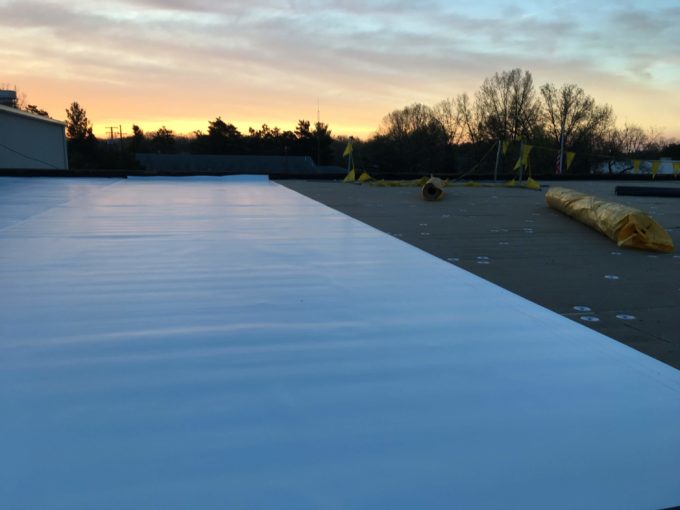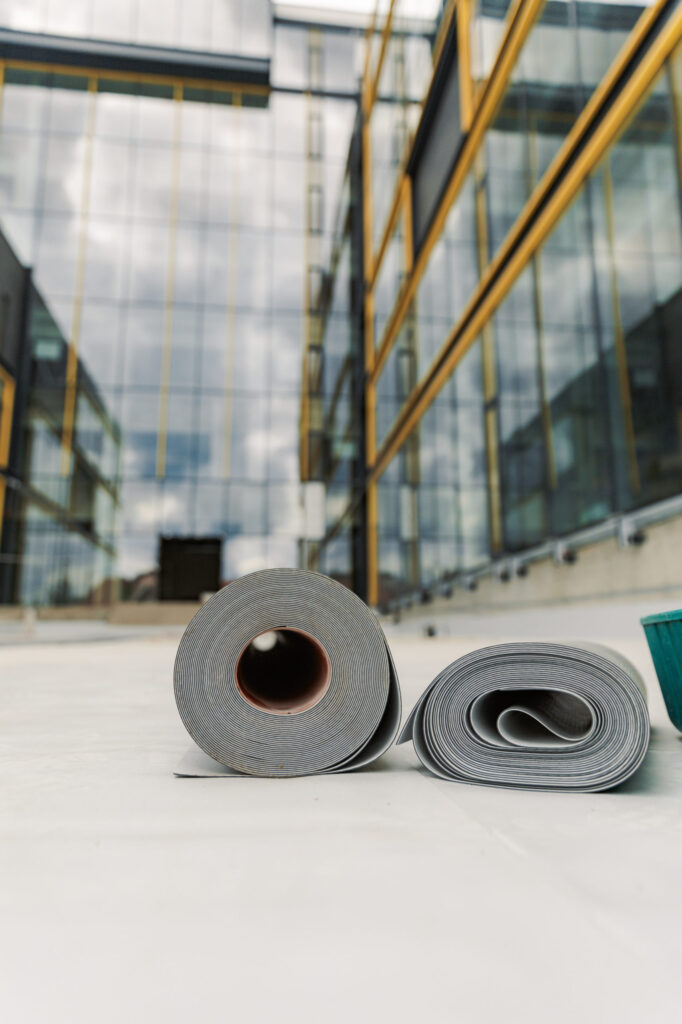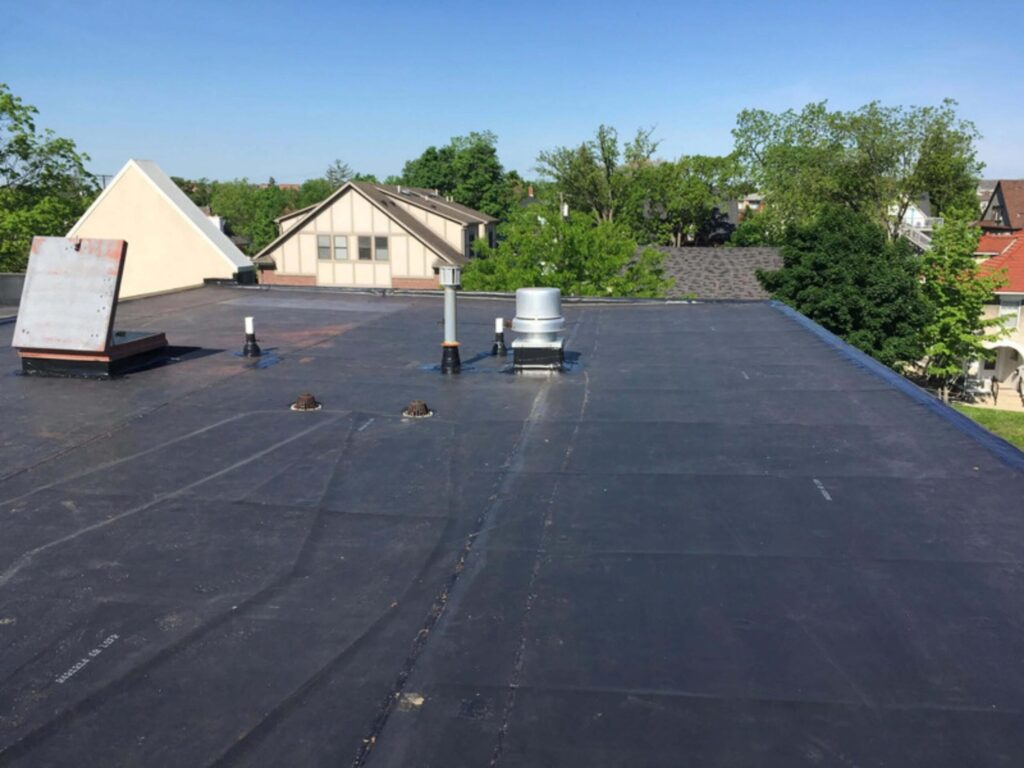TPO Versus PVC Roofing: Which Is Better for Your Roof?

What are the differences between TPO and PVC roofing? Find out more in this article by Summit Commercial Roofing.

What are the differences between TPO and PVC roofing? Find out more in this article by Summit Commercial Roofing.

The average commercial roof lasts between 15 and 30 years, but its lifespan varies based on how often it’s maintained, the environmental conditions it’s exposed to, and the type of material it’s made from.
TPO and PVC are two of the most common material options used on low-slope commercial roofs. If you need to replace your existing system, it can be challenging to understand which option is right. Neither option is inherently bad; it just depends on where you’re located and what your roof will be exposed to.

TPO (thermoplastic polyolefin) is a newer material on the market that blends rubber, polypropylene, and propylene into a three-layer, single-ply material that covers the entire roof.
Benefits:
Disadvantages:

PVC (polyvinyl chloride) is a thermoplastic roofing material featuring heat-welded seams.
Advantages:
Disadvantages:
| Method | Adhesive | Mechanically Attached | Induction Welded |
|---|---|---|---|
| Environmental Conditions/Climate | Ideal for moderate to warm climates—less effective in extremely cold temperatures where adhesive can become brittle | Excellent for areas prone to high winds, but may be more prone to leaks in very wet climates | Good for variable climates, including those with temperature fluctuations |
| Roof Type | Ideal for complex roof geometries or roofs with a lot of equipment or penetrations | Ideal for large, open roofs | Ideal for both complex and simple roof layouts |
| Level of Ease/Complexity | Technically demanding—weather conditions must also be right | Simpler and quicker but still labor-intensive | The hardest of all three methods as it requires specialized equipment and some technical knowledge but overall less labor-intensive |
| Overall Expense | Varies based on the price of adhesive. Not as costly as induction welded but costlier than mechanically attached | Least expensive but may lead to higher maintenance costs due to leaks | Most expensive, but may lead to lower long-term maintenance costs |
| Installation Time | Lengthy and delays due to weather conditions are possible | Faster than adhesive methods | Faster than adhesive methods, but longer setup and preparation time required |
| Potential Risk of Roof Damage | Low risk | High risk | Low risk |
TPO and PVC roofs can last several decades before replacement is necessary. However, PVC roofs tend to have a slightly longer lifespan of 20 to 30 years compared to TPO’s 15 to 25 years. It’s worth noting that proper maintenance is also important to maximize the longevity of your roof.
Both options are also durable roofing solutions. TPO is known for its flexibility, especially in cold temperatures. It also features good UV resistance and is resistant to mold, chemicals, tears, and other physical damage.
Conversely, PVC is known for its ability to withstand winter weather, which is especially helpful in a Midwest climate. PVC is also fire- and chemical-resistant.
TPO and PVC roofs are both good roofs for commercial properties in areas that experience all seasons of weather. As we noted above, TPO’s flexibility in cold temperatures is ideal when winter weather strikes, while PVC’s strength and durability help it stand up to the snow, ice, and frigid temperatures that Michigan experiences each winter.
Bottom line: Both roofing options are ideal for climates that experience cool temperatures and winter weather, though PVC tends to be the more favorable option for all climates.
TPO and PVC roofs are also known for their energy efficiency. Due to its reflective properties, TPO is often the preferred roofing type in hot climates.
TPO is the more affordable option, with such roofs typically priced between $4 and $10 per square foot (including materials and installation). PVC roofs are more expensive, typically priced between $5 and $15 per square foot for materials and insulation.
However, there’s more that you should consider when selecting a new roof than just the upfront price. Don’t discount the importance of a PVC roof’s durability, which results in less maintenance costs over its lifetime. If your PVC roof lasts for 30 years versus a TPO roof that lasts for 22, you’re making up for an initially higher-priced roof by maximizing your investment in longevity.
TPO roofs are typically fast and easy to install, while the installation of PVC roofs tends to be more complex.
Maintenance is fairly straightforward for both types of roofs, and it’s also essential to roof longevity. For example, TPO roofs require regular cleaning and inspections for damage. Seam resealing may also be necessary on occasion. PVC roofs also require routine cleaning and inspection. However, PVC roof repair is typically required less frequently than TPO and other types of roofing due to its enhanced durability, which can help make it a more attractive long-term option.
Summit Commercial Roofing has specialized in providing commercial roofing services throughout southeast Michigan since our founding over 50 years ago. We can install, replace, and repair both TPO and PVC roofing. If you need help deciding which material is best for your roof, please contact us today to schedule an assessment. You can also visit our blog for more resources.
Is your property in need of roofing service? Contact Summit Commercial Roofing today at 734-422-8280 or fill out our online form for more information and to schedule a free, no-hassle roof inspection and service estimate. As Southeast Michigan's leader in commercial roofing services, we're standing by to deliver fast, reliable and high-quality roofing service.